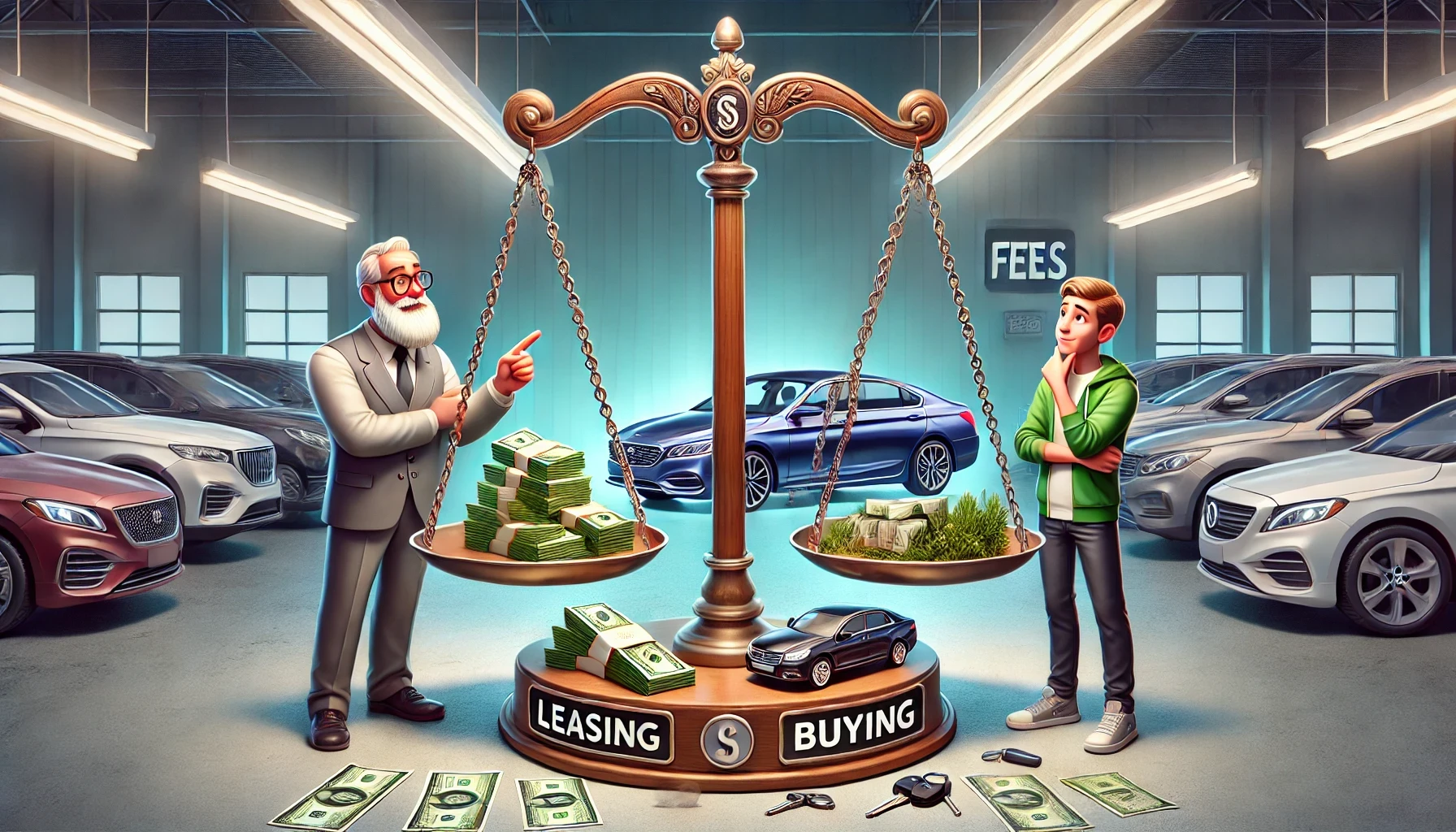Imagine walking out of the dealership with the keys to a brand-new car, feeling on top of the world—only to realize years later that your lease payments have cost you far more than anticipated, leaving you with nothing to show for it.
Take Sarah, for example. She leased a $35,000 car for three years, paying $400 per month. By the end of her lease, she had spent $14,400 but still had no car to her name. Had she bought a certified pre-owned car instead, she could have saved thousands and owned the vehicle outright.
In this guide, we’ll reveal why leasing a car is a bad idea, the hidden costs you might not expect, and smarter, more cost-effective alternatives to car leasing.
Key Takeaways
- Leasing often leads to higher long-term costs compared to buying a car.
- Depreciation and mileage limits can make leasing financially restrictive.
- Opting for a 2–3-year-old used car can save up to 30% compared to buying new.
- Alternatives like car-sharing apps, public transport, and ride-sharing services can save thousands annually.
- Exceptions to leasing exist, but they’re rare and specific.
Table of Contents
The Hidden Costs of Leasing a Car
Leasing is often marketed as a low-cost way to drive a new car without long-term commitment. However, the hidden costs can make leasing far more expensive than it initially appears
Using one of the best expense tracker apps can help you understand how leasing impacts your monthly budget and uncover hidden costs you might overlook.
Depreciation and Residual Value
Leasing payments primarily cover the car’s depreciation during the lease term. Cars lose about 20–30% of their value in the first year and up to 60% in five years.

You’re essentially paying for the steepest value drop without building any equity.
Example: A $35,000 car depreciates by $10,500 in the first year. If your lease covers this depreciation, you’re spending over $800 per month without owning the car.
Mileage Limits
Most leases cap annual mileage at 10,000 to 12,000 miles. Exceeding this limit results in hefty penalties, typically $0.15 to $0.30 per mile.

Example: Driving 5,000 extra miles in a year could cost you $1,500 at $0.30 per mile.
Wear-and-Tear Fees
Minor scratches or dents? Expect to pay for repairs when returning the car. Lease agreements often have strict guidelines for acceptable wear and tear.
End-of-Lease Charges
Deciding not to purchase the car at the end of the lease? You’ll likely face fees for disposal or reconditioning.
Insurance and GAP Coverage
Lease agreements require higher levels of insurance coverage, including GAP insurance, adding to your monthly costs.
Leasing vs. Buying a Car: The True Cost
Let’s break down the financial impact of leasing versus buying a $35,000 car over three, five, and ten years.
| Term | Leasing Costs | Buying Costs |
|---|---|---|
| 3 Years | $14,400 (payments) | $14,000 (payments + equity) |
| 5 Years | $24,000 (2 leases) | $21,000 (loan + equity) |
| 10 Years | $48,000 (4 leases) | $35,000 (ownership cost) |
Key Insight: Over a decade, leasing costs 37% more than buying, even when accounting for maintenance and repairs for older cars.
Why Buying Used Is Smarter
Certified pre-owned (CPO) vehicles offer a reliable and cost-effective alternative to leasing. Here’s why:
- Lower Depreciation: CPO cars have already gone through their steepest depreciation phase.
- Warranty Coverage: Many CPO vehicles include extended manufacturer warranties.
- Ownership Benefits: You build equity over time and avoid mileage restrictions.
By purchasing a used vehicle and saving on depreciation costs, you could explore high-return small investments to grow your savings further.
Practical Steps to Save Money When Buying a Car
- Set a Realistic Budget: Follow the 20/4/10 rule: Put 20% down, finance for no more than 4 years, and keep monthly payments under 10% of your income.
- Shop Certified Pre-Owned: Use trusted platforms like Kelley Blue Book, Edmunds, and TrueCar to find reliable options.
- Negotiate Smartly: Focus on the total price, not just the monthly payment.
- Secure Preapproved Financing: Compare loan rates from your bank or credit union before heading to the dealership.
- Inspect and Test Drive: Get a trusted mechanic’s inspection and test drive the car thoroughly.
Alternatives to Leasing
If buying isn’t feasible, these alternatives can save you money:

Car-Sharing Services
Apps like Zipcar and Turo let you rent cars on demand, which is ideal if you don’t drive daily. For example, using Zipcar could cost around $250/month compared to $400+ for a lease.

Public Transportation
A monthly transit pass costs significantly less than car ownership. If you live in an urban area with robust transit options, this is a practical choice.
Ride-Sharing Apps
Services like Uber and Lyft are perfect for occasional use. For instance, spending $300/month on ride-sharing is still cheaper than leasing for many people.
Exceptions: When Leasing Might Make Sense
While leasing is generally less cost-effective, there are a few scenarios where it might be practical:
- Business Use: Leasing offers tax advantages for business owners.
- Short-Term Relocation: If you’re in a city temporarily, leasing might be more convenient.
- Luxury Cars: Leasing high-end vehicles can help you avoid long-term depreciation.
Quick Tips for Financially Smart Car Ownership
- Stick to your budget and avoid impulse decisions.
- Consider the total cost of ownership (TCO), including fuel, insurance, and maintenance.
- Use online calculators to compare financing options and ownership costs.
Conclusion
Leasing a car may seem appealing at first, but the long-term financial drawbacks far outweigh the short-term convenience. By purchasing a certified pre-owned vehicle or exploring alternatives like car-sharing and public transport, you can save thousands of dollars while maintaining flexibility.
FAQs
1. Can I negotiate a car lease like I would when buying a car?
Yes, you can negotiate several aspects of a lease, including:
The capitalized cost (price of the car).
Money factor (interest rate equivalent).
Mileage allowance.
Fees and penalties.
Negotiating can save you thousands over the lease term.
2. What happens if I exceed the mileage limits in my lease?
Exceeding mileage limits results in hefty penalties, typically $0.15–$0.30 per mile. If you anticipate driving more than the agreed limit, negotiate a higher mileage cap upfront. It’s usually cheaper than paying penalties later.
3. How does a car lease impact my credit score?
Leasing a car affects your credit score in the same way a loan does. Consistent, on-time payments improve your score, while missed payments harm it. Additionally, the lease will increase your overall credit utilization, which could slightly lower your score.

